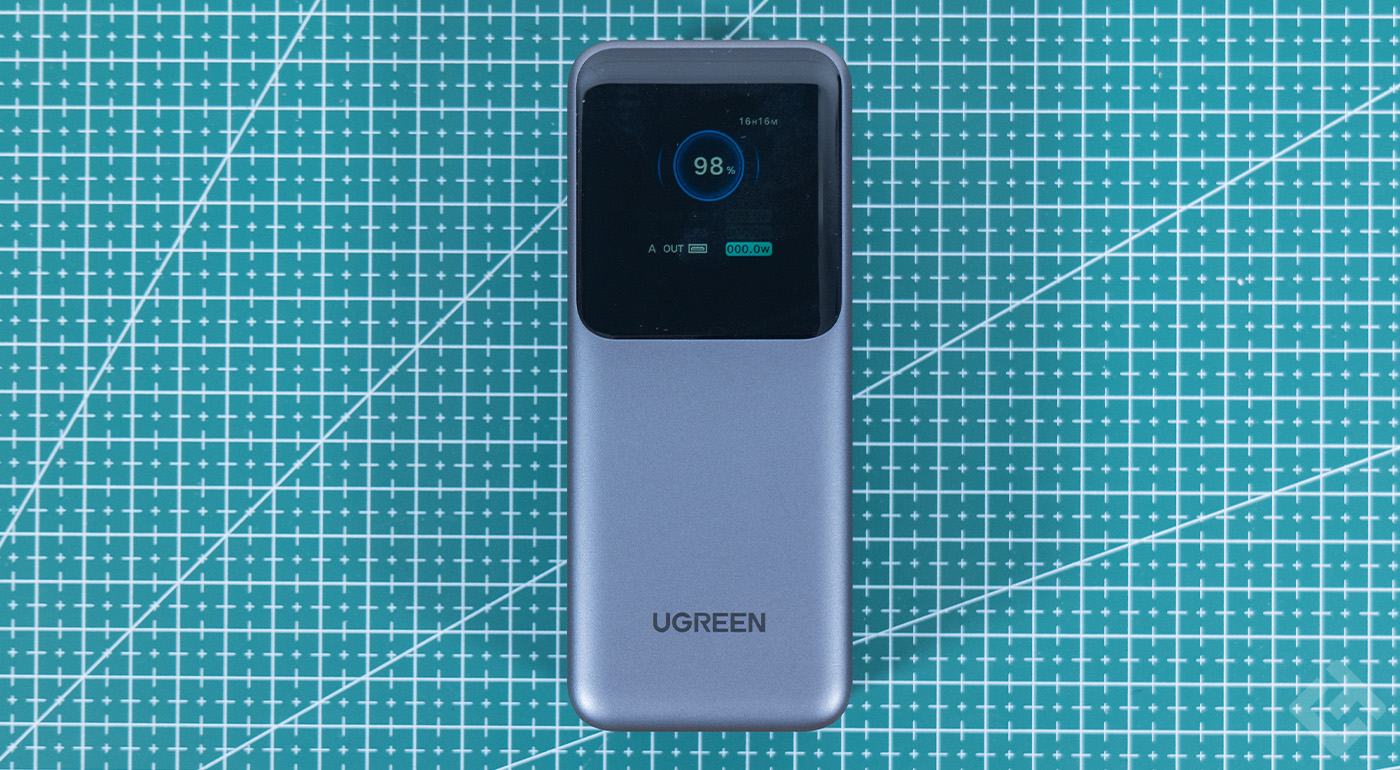An external battery is often essential, especially to prevent battery failure, especially with smartphones or other devices, as far as today’s model is concerned, the Ugreen Nexode Powerbank 20000 mAh.
On paper, the Ugreen Nexode external battery stands out for its high capacity and power. Equipped with a USB-A port and two USB-C ports, one of which can deliver a maximum power of 130 W, let’s see how it performs in real-life conditions.
Design and packaging
The Ugreen Nexode 130 W comes in a fairly compact box, like the external battery itself. Inside, I was able to find the product tested today, as well as two accessories, namely a USB-C to USB-C cable, and a small storage bag.
The powerbank is rectangular in shape, an ideal design for easy storage in a backpack. Its dimensions are 5.4 x 5.1 x 1.3 cm and it weighs 480 g, so it requires a little space.
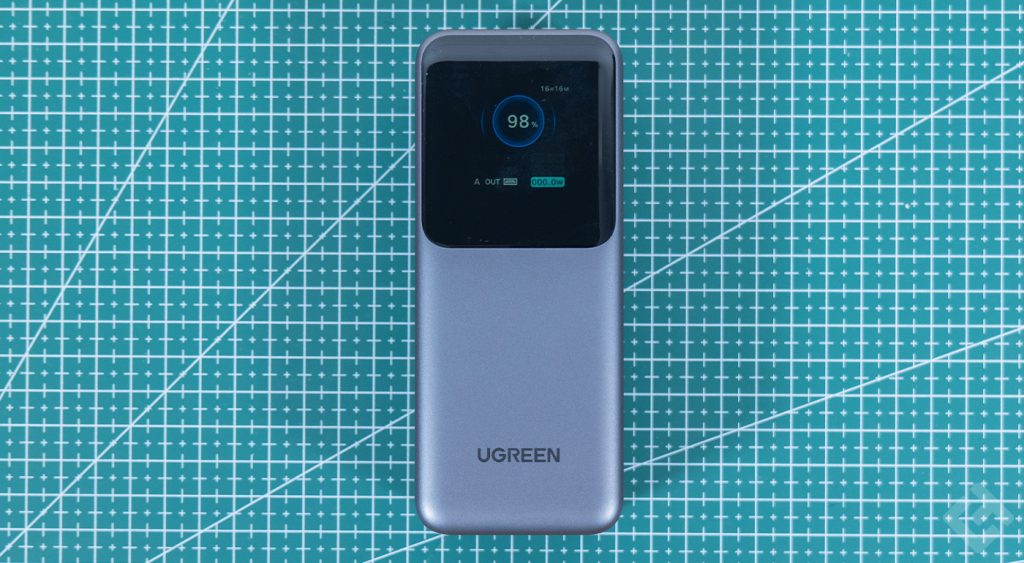
The quality of the device is excellent, offering a good grip thanks to its two non-slip rubberized strips on the back. Inside, a lithium-ion battery, which I’ll talk about in a later section of the test.
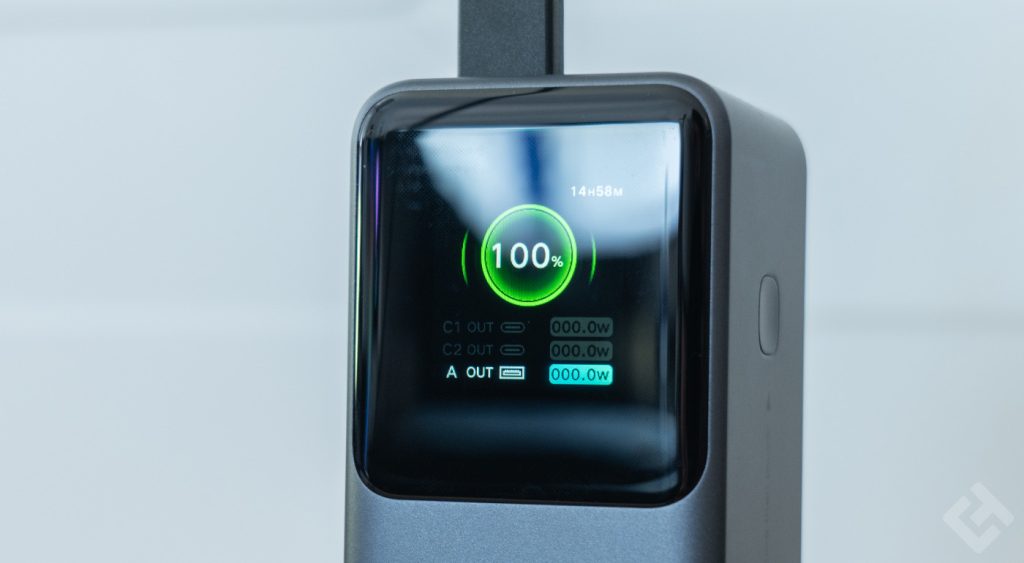
On the front, a display shows information on input and output power for each port. Despite its small size, the display also shows the remaining time the battery can recharge a device at current power, as well as the time remaining for a full recharge of the battery itself.
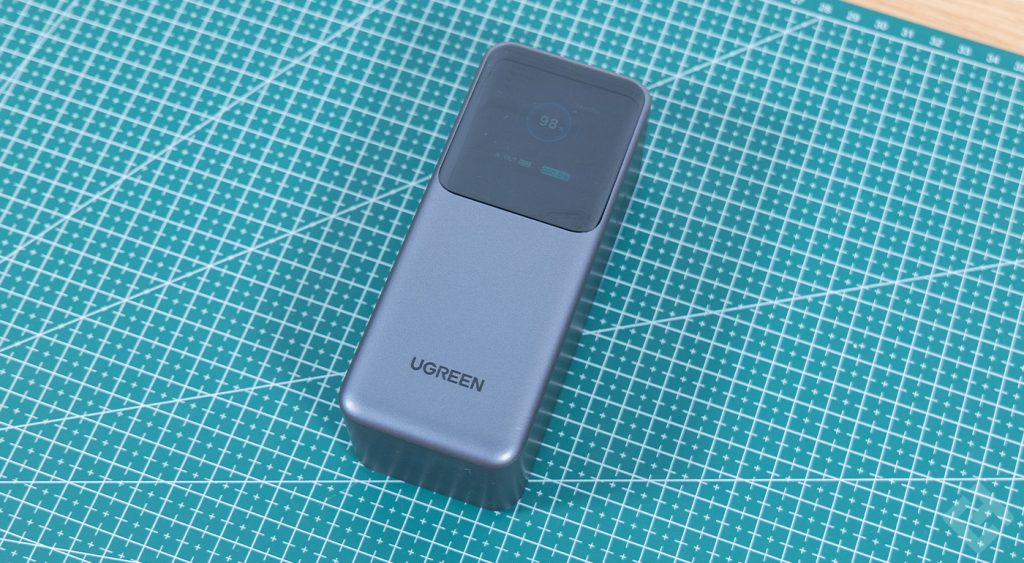
The device does not provide any indication of the battery’s condition or the number of charge/discharge cycles. Nor is it possible to increase the screen brightness, which can be a problem on sunny summer days, forcing you to bring the powerbank closer to your face to read the information. What’s more, the screen tends to attract fingerprints, further complicating reading.

Finally, the top of the Ugreen Nexode has three different ports, offering quite a variety of connectivity. I count one USB-A port and two USB-C ports. The lowest USB-C port offers up to 100W of power.
On the left-hand side, there’s a power button for the external battery. A simple press will turn it back on after a period of inactivity.
Ugreen Nexode 130 W specifications
| Model | Ugreen Nexode 130 W |
| Capacity | 20,000 mAh |
| Claimed autonomy | N/C |
| Connections | USB-C1: 10V⎓2,25A / 5V⎓3A / 9V⎓3A / 12V⎓3A / 15V⎓3A / 20V⎓5A – 100W Max USB-C2: 10V⎓2.25A / 5V⎓3A / 9V⎓3A / 12V⎓2.5A – 30W Max USB-A : 10V⎓2.25A / 5V⎓3A / 9V⎓2A / 12V⎓1.5A – 22.5W Max |
| Charging power | 130 W |
| Number of devices charging simultaneously | 3 |
Performance
The operation of the Ugreen 130 W external battery is simple enough to understand. When you connect a single device, it receives all available output power. However, if you connect several devices simultaneously, the battery’s total power must be shared between them.
This means that each device will receive less power than if it were connected alone. In other words, the more ports you use at the same time, the less power each device will receive, as it is shared between all connected devices.
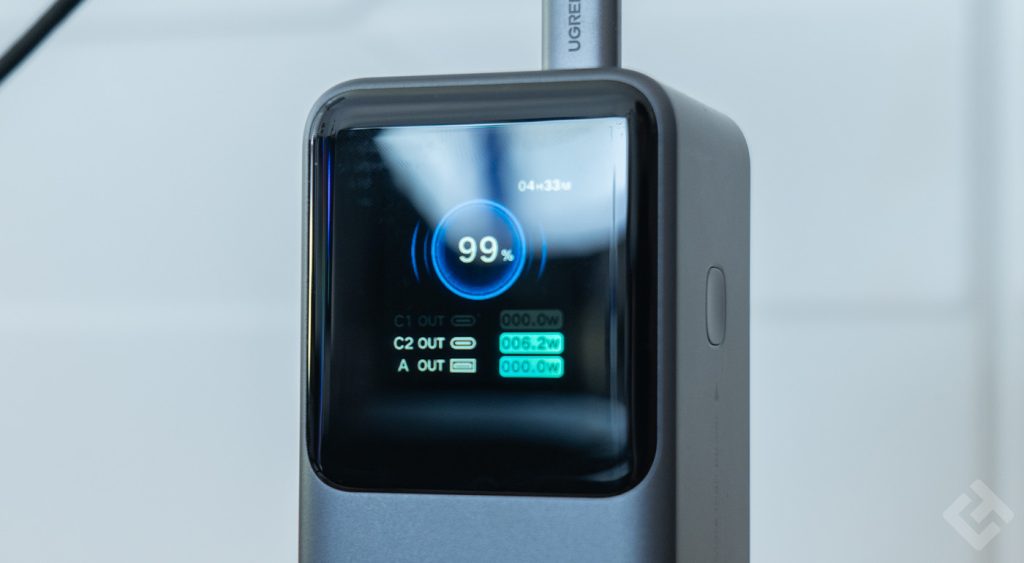
In my test, I was able to simultaneously charge my iPhone 13, my Huawei Watch Fit 3 and my Logitech Pro X SuperLight 2 gaming mouse without encountering any problems. I particularly appreciated the “maintenance” charging mode.
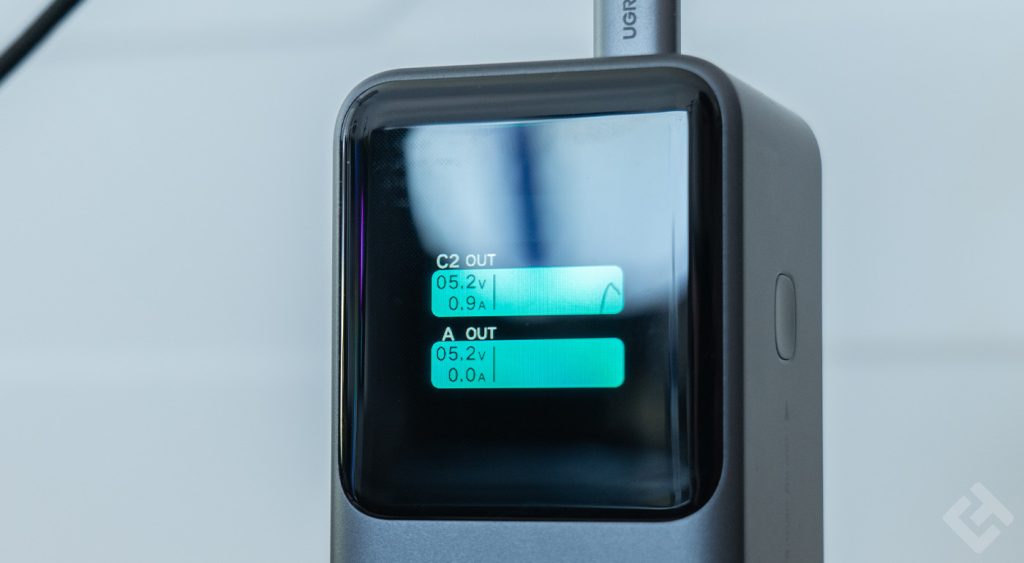
To activate this mode, simply hold down the button for three seconds until an icon appears in the top left-hand corner of the screen. Ugreen has specifically added this setting for low-energy devices, such as wireless headphones or my connected watch.
This feature prevents the powerbank from interrupting charging just before the connected device is fully charged. With my Huawei FreeBuds 5i, for example, I found that the powerbank stopped charging at 98%, because the battery stopped charging.
Ugreen promises that even after 1000 charging cycles, the Nexode retains 80% of its initial capacity. As for recharging time, our test showed that it takes 1 hour and 40 minutes to fully recharge the powerbank. During this process, the device maintains a constant recharging power of 59.5 W.
Ugreen Nexode 130 W: Reviews
Ugreen’s 130 W Nexode is a powerful and practical option for recharging multiple devices on the move. Its maintenance charging mode is particularly useful for low-energy devices.
Despite the lack of battery status information and the ability to adjust screen brightness, its performance and excellent value for money make it a good choice. Its compactness and airplane-friendliness amplify its practicality for travelers.


